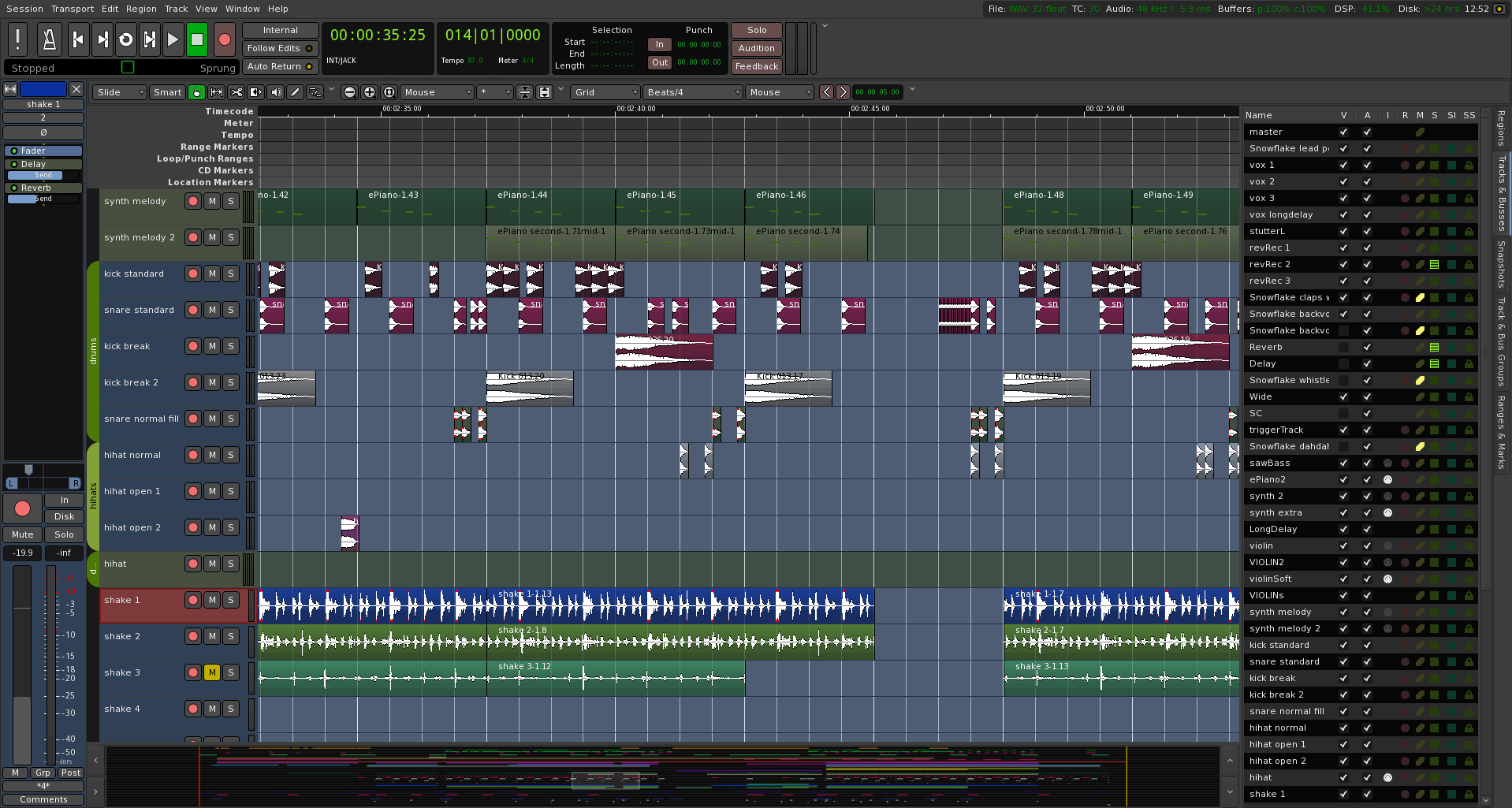
To record, once an instrument is working, the track must first be "armed" by clicking on the button with the red circle to the left of the newly added track line. The media-sound/qjackctl or media-sound/vmpk packages may also be of use. If not, the connection managers from the "Window" menu may help: "MIDI Connections", "Audio Connections", and "Tracks and busses". If a physical MIDI instrument, such as a keyboard, is correctly set up with ALSA, it should now play by default, with audio output. Select an instrument from the list in this "Add Track/Bus/VCA" dialog, such as the "ACE Reasonable Synth" which is provided with Ardour (other instruments should be available if they are installed as plugins). To add a MIDI track, in the menu, click "Track->Add Track, Bus or Vca", then select the "MIDI tracks" tab on the left of the new window. To record a MIDI track, click the large "Rec" (text) button at the top right of the main window (or in the menu: "Window->Recorder->Show Recorder"), to show the recorder pane. If only MIDI tracks are required, click "cancel" in this dialog. When done, click "Start" to launch JACK (if it is not already running, and if "Autostart" was left enabled), and open the main Ardour windows.Ī "Template setup" dialog will pop up, proposing to create one or more new (audio) tracks. Change any other parameters necessary, though the defaults will probably be fine. Choose the sound device (with jack, all inputs and outputs necessary should be on the same device). To follow the rest of this article, select JACK, which is a good choice for audio quality, latency, and flexibility - JACK must be properly installed and configured, and the global "jack" USE flag should probably be set. In the next ("Audio/MIDI setup") dialog, configure the audio setup. Click "Open" once everything is correctly selected. The session can be given a descriptive name, and the location to save the files can be chosen. In the next "Session setup" dialog, select a session template depending on the work planned - to follow on with this article, select "Recording session". Click the "New session" button at the top of the dialog to follow on with this article, otherwise a pre-existing session may be opened. A session stores the Ardour state and Data for a project. When starting Ardour, it will show a "Session Setup" dialog (this may be obstructed by the splash screen, use the taskbar to bring the dialog forward, or Alt+click the window to move it). T, -template Use given template for new session P, -no-connect-ports Do not connect any ports at startup O, -no-hw-optimizations Disable h/w specific optimizations N, -new Create a new session from the command line m, -menus file Use "file" to define menus k, -keybindings Path to the key bindings file to load

d, -disable-plugins Disable all plugins (safe mode) c, -name Use a specific backend client name, default is ardour B, -bypass-plugins Bypass all plugins in an existing session b, -bindings Display all current key bindings A, -actions Print all possible menu action names a, -no-announcements Do not contact website for announcements

User $ ardour6 -help Usage: Ardour Īrdour is a multichannel hard disk recorder (HDR) and digital audio workstation (DAW).


 0 kommentar(er)
0 kommentar(er)
